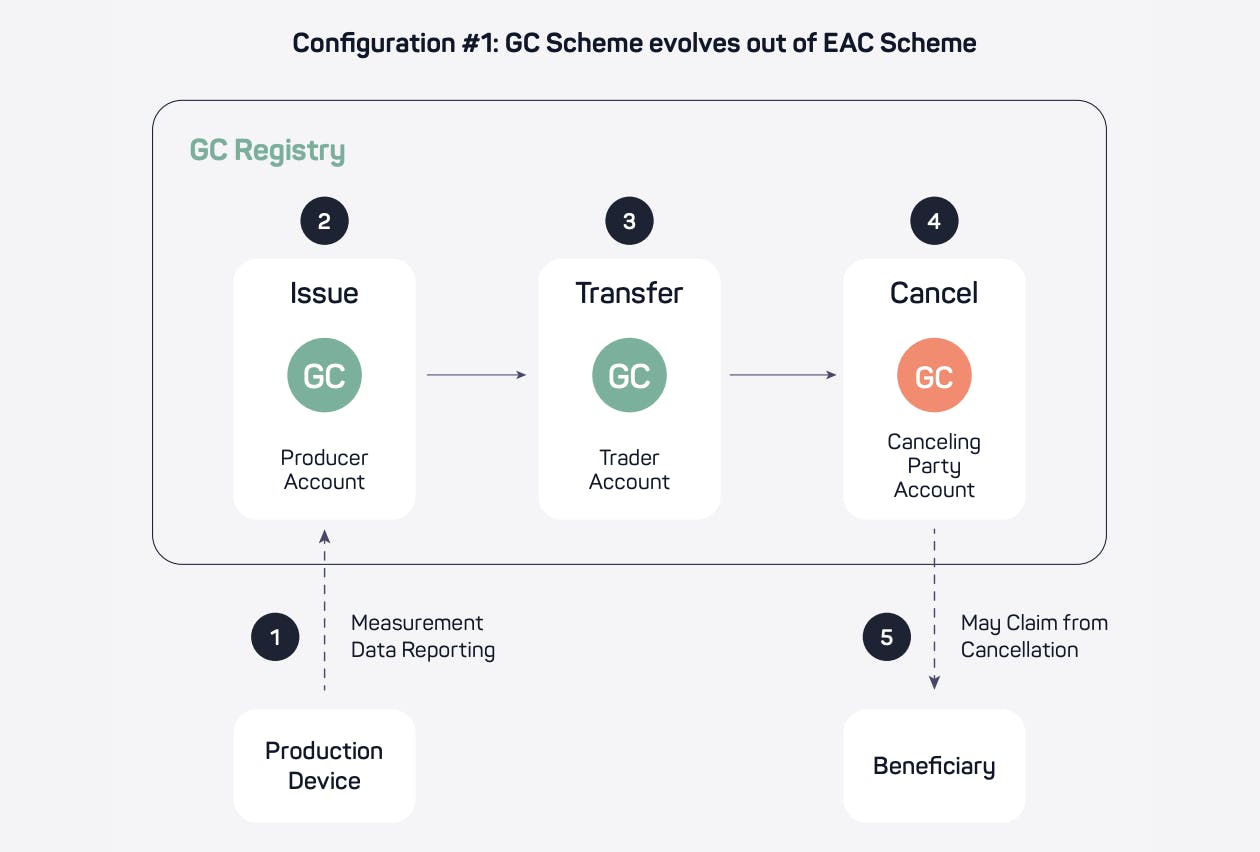Insight · 8 May 2025
A guide to navigating the emerging hourly matching standards
Our co-founder and CEO, Toby Ferenczi, has written a piece sharing his personal journey, the origins of EnergyTag, and how it led to the creation of Granular Energy to work on improving the EAC system. He also offers insight into our distinctive approach to the various hourly matching standards currently emerging across the industry.

Five years ago, I found myself deep in the fascinating weeds of a question most people never think about: how exactly does a customer, whether a household or Fortune 500 company, reliably purchase one specific type of electricity over another? After all, electrons are physically indistinguishable once they enter the grid - your solar electron looks identical to one generated from coal.
My research led me down the rabbit hole of energy attribute certificates (EAC); how they work, their role, and the various markets. I also learnt about their limitations. This research led me to found the non-profit standards body EnergyTag. Two years later, I co-founded Granular Energy and handed responsibility for EnergyTag to the brilliant Killian Daly and his team.
Trust is key to EACs
The entire value of the EAC system comes down to a consumer’s trust in the validity of the instrument and the claims made with it. The purpose of an EAC is to enable a consumer to claim that their energy comes from a particular source without any risk of double counting or fraud. Since their inception, various mechanisms have been put in place to trust at different points in the certificate life-cycle.
- Issuance - trust comes from the fact that certificates are generally issued by trusted authorities (typically governments, regulators or grid operators) that keep a central registry of all certificates that prevents double issuance. The mechanism varies by region, but often there is some kind of national legislation that sets out the rules for certificate issuance.
- Standards for making claims - when it comes to making claims about using energy attribute certificates, there are a wide range of standards that can be followed. For carbon emission claims, the Greenhouse Gas protocol scope 2 guidance is probably the most widely adopted standard, but complimentary standards exist such as SBTi, CDP, Green-e and RE100 covering various aspects of making claims using energy attribute certificates.
Boosting trust through hourly EACs
The key limitation of EACs that jumped out at me five years ago was that certificates were (and still are) generally issued with information on the total energy production aggregated by month. The key piece of data that's missing is the underlying hourly shape of the energy production which is covered by the EAC. That's the problem that I set out to address by founding first EnergyTag and then Granular Energy.
As we’ve written about a lot, moving to hourly matching comes with a lot of benefits, enabling more credible claims of renewable energy consumption, and sending more impactful price signals to the market.
To get the full benefits of hourly matching, we really want to have hourly (or granular) certificates that come with a time-step of 1-hour or less and are independently trade-able, ideally coming from the same regulated authorities that issue energy attribute certificates today. As interest in hourly matching and 24/7 carbon-free energy has grown in the past few years, EAC issuers and their registry providers are starting to develop the ability to issue GCs. This includes PJM GATs (US), MRETS (US), NEPOOL (US), Evident (International) and Energinet (Denmark). Although the roll-out of hourly certificates will be gradual, it seems inevitable that at some point all EACs will come with a timestamp.
Emerging standards for hourly matching
A variety of standards are emerging to support organisations getting started with hourly matching. EnergyTag provides a voluntary standard that granular certificate (GC) issuers can follow, with multiple configurations depending on the relationship with the local EACs. Configuration 1 is for situations where the local EAC issuer is also the GC issuer, and Configurations 2 & 3 are for when the GC issuer is independent. Configuration 1 enables GCs to be traded as independent instruments, and seems like the natural end-state. At Granular Energy we have developed our own EnergyTag scheme for Configuration 3 optimized for energy suppliers (currently being audited - please contact us if you'd like to know more). We are also working on several other projects following EnergyTag Configuration 1.

EnergyTag Standard Configuration 1
There are also a range of voluntary standards for enabling reliable hourly matching claims using monthly EACs combined with metering data. These include the TUV EE02 standard, the UK Green Building Council’s Renewable Energy Procurement Guidance, the Climate Group’s 24/7 Carbon-Free coalition Criteria, Green-e’s forthcoming 24/7 standard and Naturemade’s 24/7 standard for Switzerland.
A flexible platform
At Granular Energy, software and services supports these standards, delivering reliable hourly matching metrics and claims for our customers. We implement whichever is best suited to our customers - and in a way that is optimised for energy suppliers. The key message here? There are no barriers to making reliable hourly matching claims today.
Share article